Wildflower families: Ranunculaceae, the Buttercups
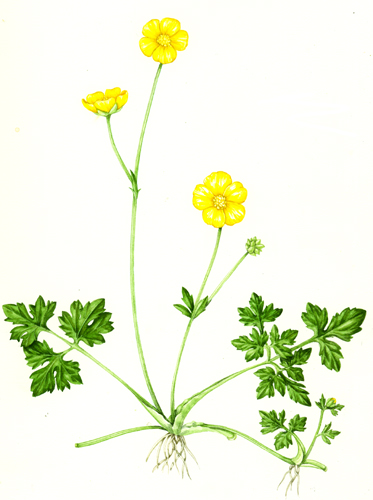
Wildflower families: Ranunculaceae, the Buttercups is the first of a series of blogs I’m doing based on the online course offered by Field Studies Council. Although I’ve picked up a fair bit of botany over the years, I’m interested in building on my observations, and learning to look for similarities between plants who are in the same families.
These blogs will look at several of the most common higher plant families. It might be helpful to refer to some of my earlier blogs on the basics of botany, different fruit types, and how scientific names work to closely describe one species (What’s in a name 1 and part 2).
I’d also like to pop in a disclaimer here – I’m a keen amateur, and not a professional botanist. Although I’ll do my best to check everything, if you see any errors, let me know.
Wildflower families: Ranunculaceae
The Buttercup family has 58 genera and 1750 species globally. Flowers in this family are often brightly coloured and have been cultivated for gardens. Many are poisonous due to alkaloids in the tissues. Although known as the buttercup family, other species include Clematis, Larkspur, Columbine, Delphinium, Aquilegia and Nigella.
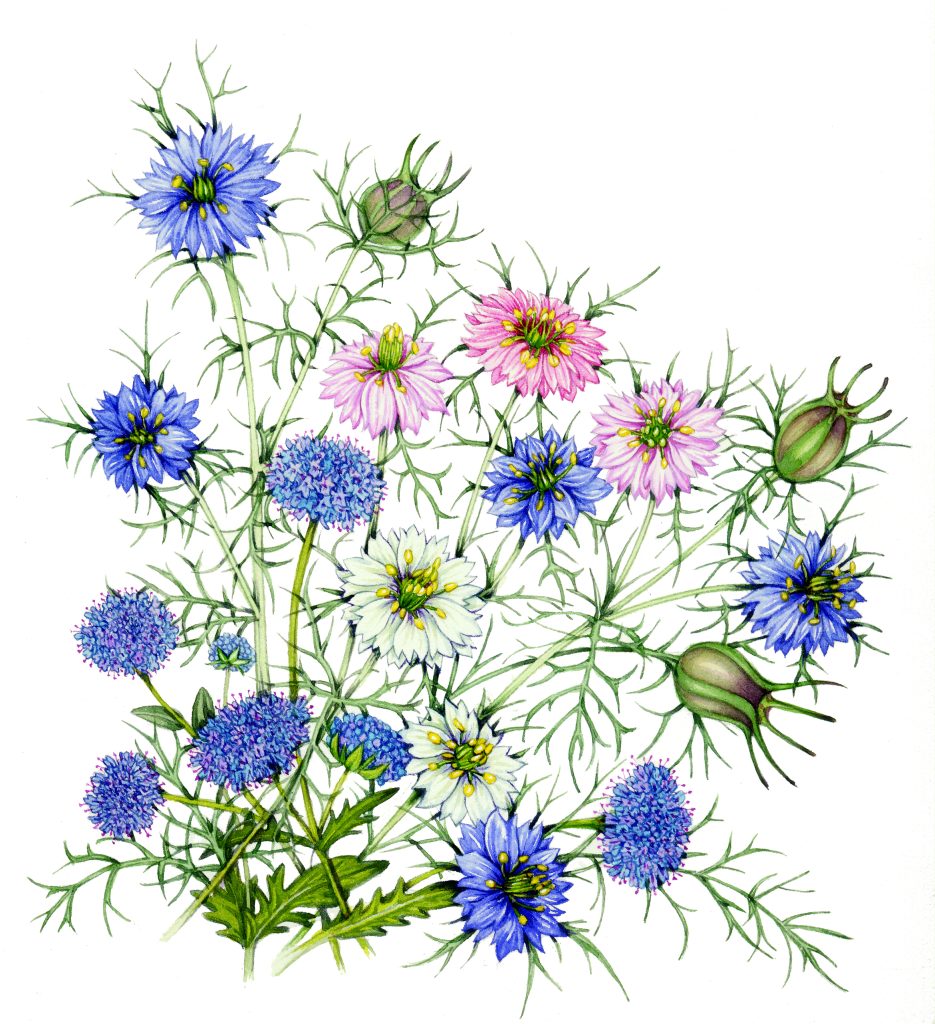
Nigella are in the Buttercup family (with Scabious flowers, not a Ranunculus species)
Ranunculaceae overview
Flowers in this family often have cup-shaped flowers and loads of stamens. Flowers bloom in clusters or spikes and have 5 or less petals. The latin name Ranunculaceae refers to the damp conditions many of these flowers like, it translates as “little frog”.
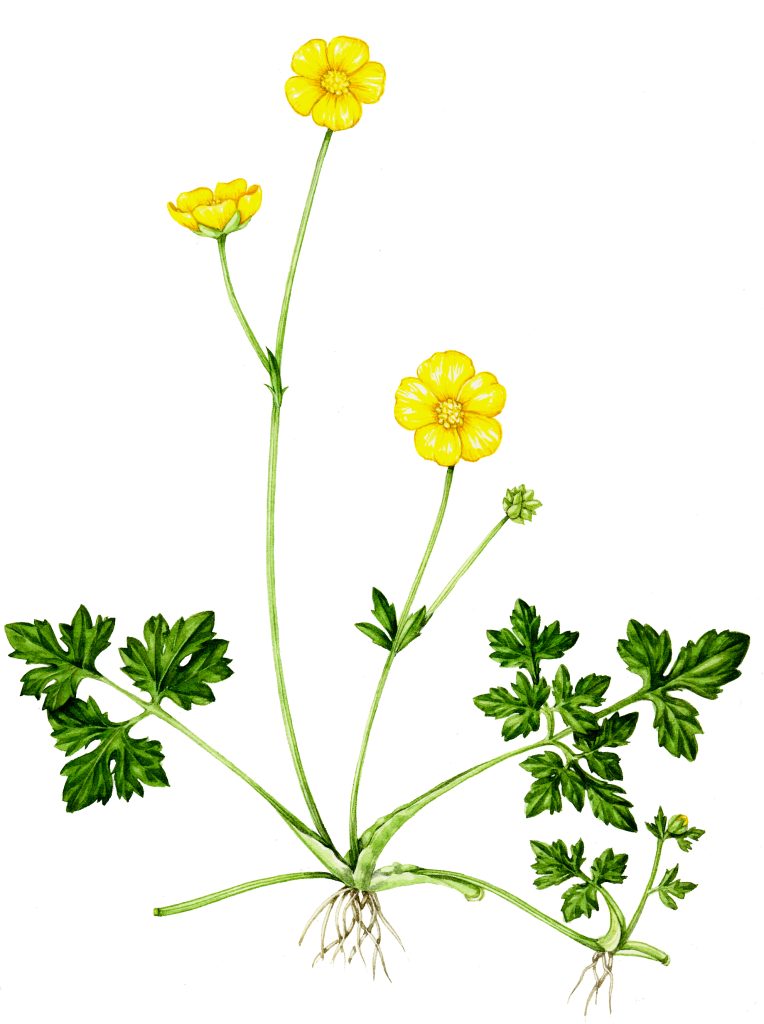
Creeping buttercup Ranunculus repens
Ranunculaceae Leaves
In almost all cases, Ranunculus species have alternate leaves. The main exception to this is the clematis. Sometimes it can be hard to tell if leaves are alternate or opposite when leaves are clustered toward the base of the plant (as with the Creeping buttercup above). Leaves often have sheathing bases. (For more on leaf position and margins check out my earlier blog.)
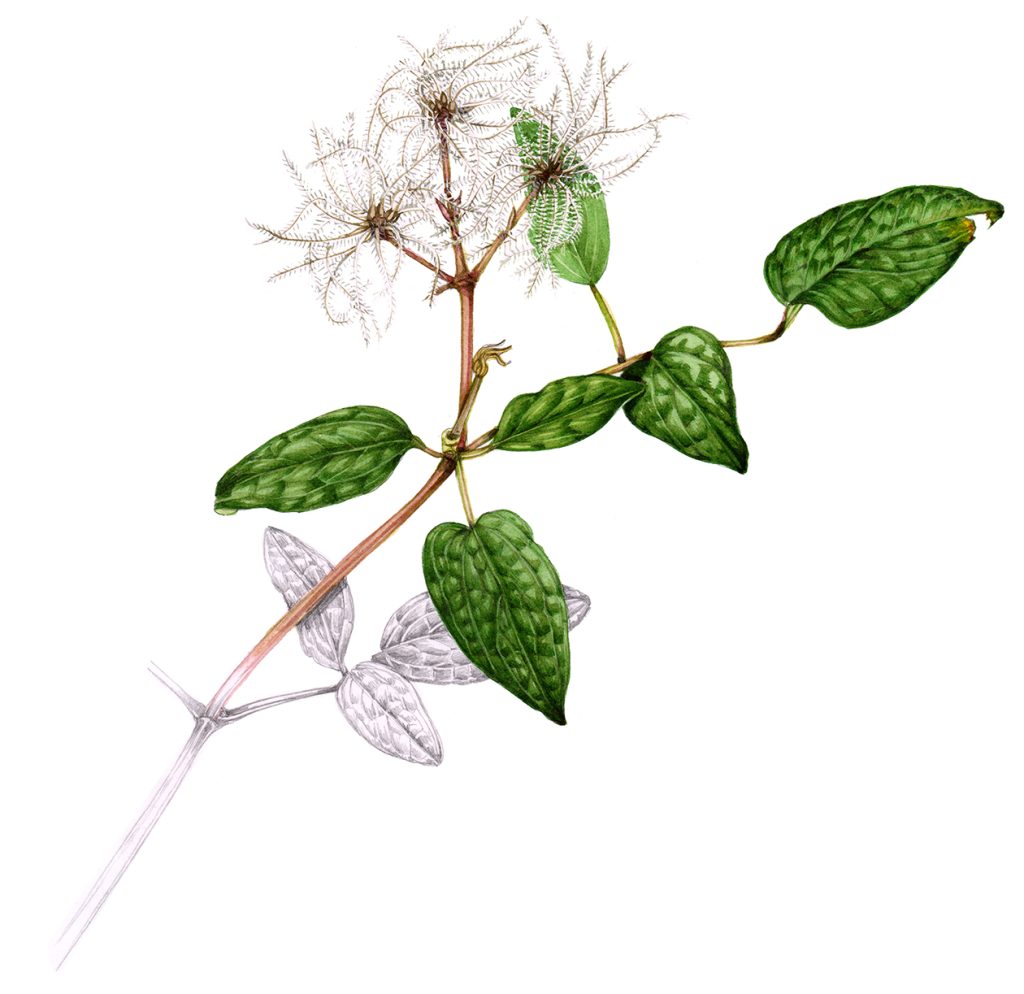
Old Man’s Beard Clematis vitalba
There are rarely stipules (leafy appendages that grow at the base of a leaf).
In general, the leaves are lobed or deeply divided, and lobes tend to be palmate (spreading out like the fingers of a hand).
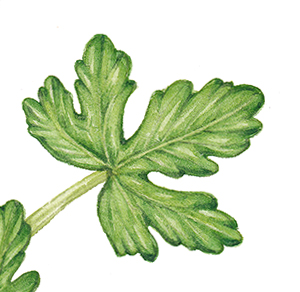
Celery-leaved buttercup leaf Ranunculus sceleratus
Ranunculaceae Flowers
Flowers are regular, which means they have radial symmetry. They tend to have five petals and 5 sepals. In some species, the sepals are more conspicuous than the petals. This course taught me that the golden “flowers” of Marsh marigold Caltha palustris are, in fact, its’ sepals. the plant has no petals at all!
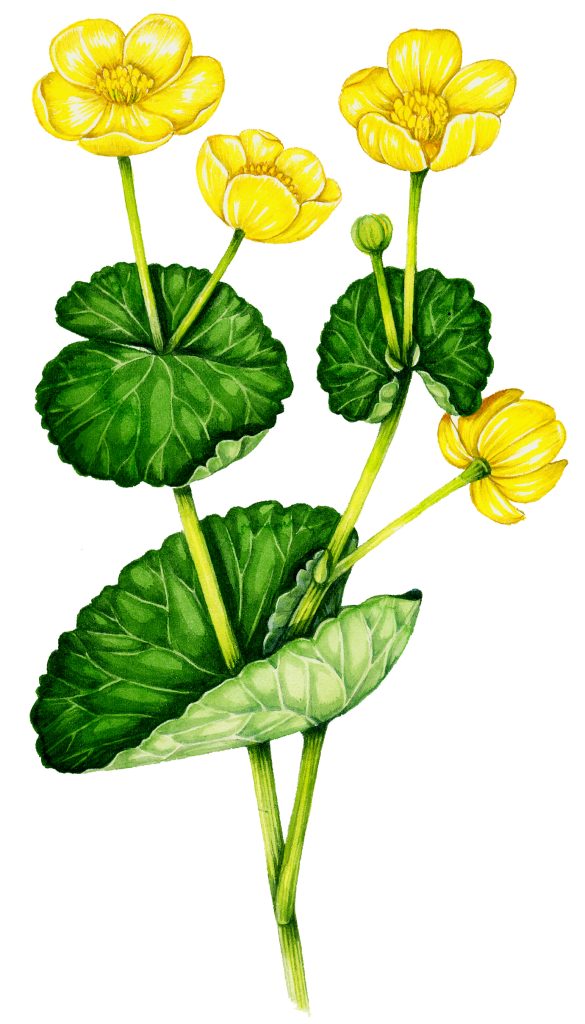
With the buttercups, the way the sepals relate to the petals can help tell species apart. In some, like Meadow and Creeping buttercup, the sepals are close to the petals. In the Hairy buttercup they curve back from the petals, pointing downwards. For more on telling UK buttercup species apart, click the link for my blog.
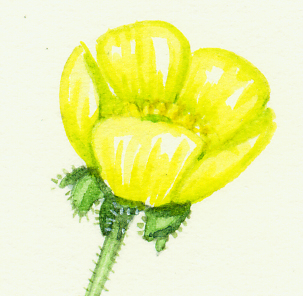
Hairy buttercup sepals Ranunculus sardous
In most cases the flowers are in a cluster, or show cymose branching (I know, lots of technical terms). Wood anemone is an exception, with only one flower at the top of the stalk.
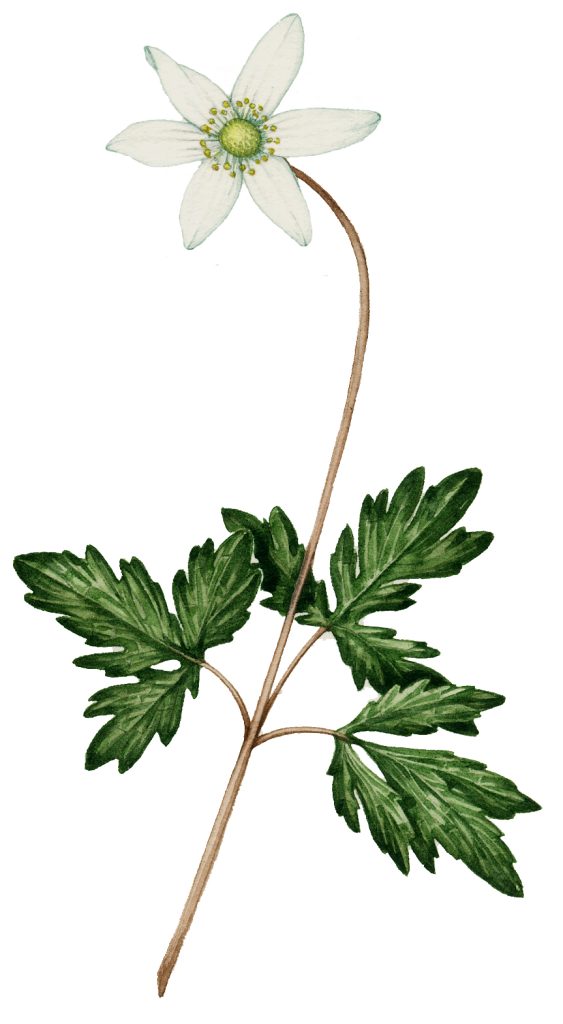
Wood anemone Anemonoides nemorosa
The inner petals often have nectaries, small honey-producing scales or reduced leaves which reward pollinators with a sweet treat.
All parts of the flower are free, and are almost all bisexual (bearing the male and female parts on one flower). The exception to this is Delphinium and the Aconite.
Stamens are numerous and the anthers tend to point outwards. This often makes it look like the stamens are curving around the centre of the flower, as with buttercups and hellebore. They ripen before the stigma is ready to receive pollen and because they point outwards, this further decreases the chance of self pollination.

Hellebore
The flowers have a superior ovary (the ovary, where the seeds are produced, sits above the flowering parts. For more on this look at my blog on the ovary)
Ranunculaceae Fruit
Fruits in the buttercup family are referred to as “achenes”, they are small and dry, and each achene carries a single seed. The seed is not released from the achene, but germinates within it once it’s been shed at maturity. The skin of the achene, the endopserm, tends to be oily.
In buttercup species, these achenes grow together into a green, globe-like structure. Individual carpels break off and are spread at maturity.
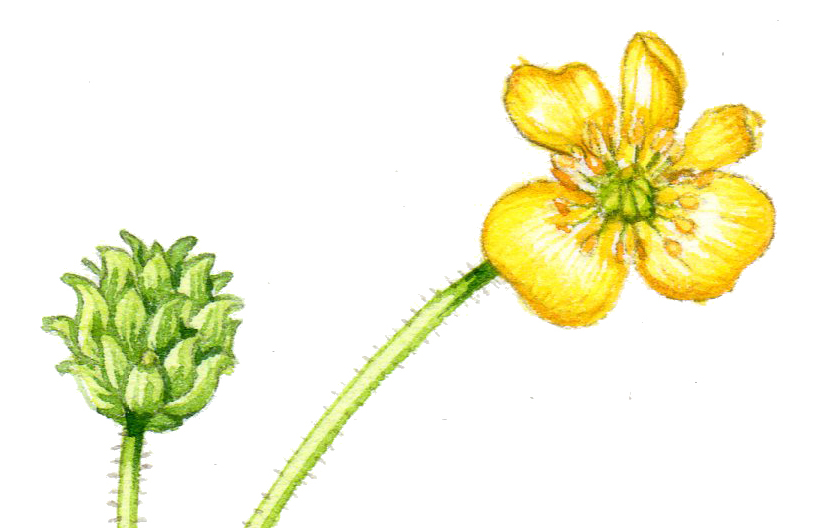
Goldilocks buttercup Ranunculus auricomis seed head
The seed-head of Nigella is made of fused carpels.
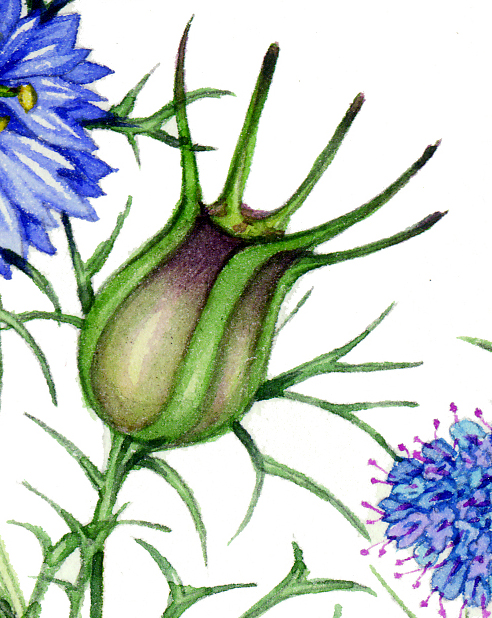
Nigella seed head
Ranunculaceae: Other species
Along with the buttercups and other species mentioned, we also find Spearworts in this family.
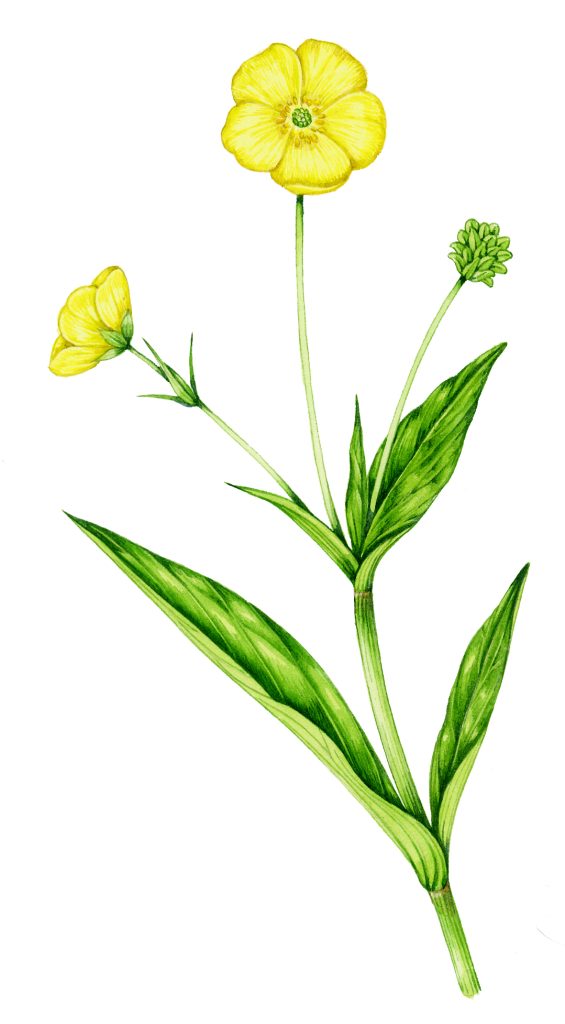
Greater Spearwort Ranunculus lingua
This isn’t surprising; the flowers and globular seed head of achenes are very similar to those of Buttercups.
Other family members include Celendine, one of the earliest flowers of spring. Unusually for this family, the leaves of the Celendine are entire.
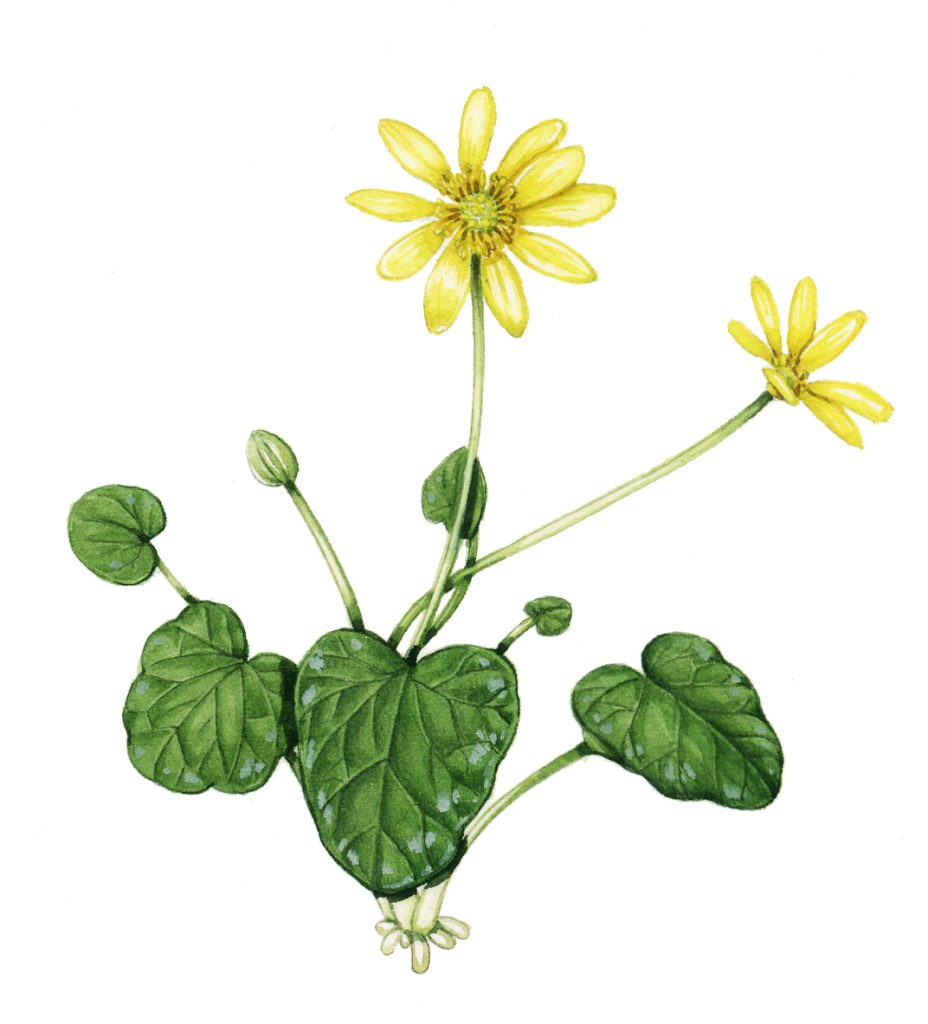
Lesser celendine Ficaria verna
One of the trickiest of flowers to illustrate in this family is the Columbine. It has a complicated flowering structure that takes some untangling. Its inclusion may seems surprising on first sight, but take a look at the shape of the seed head, and those alternate lobed leaves. Definitely a Ranunculaceae.
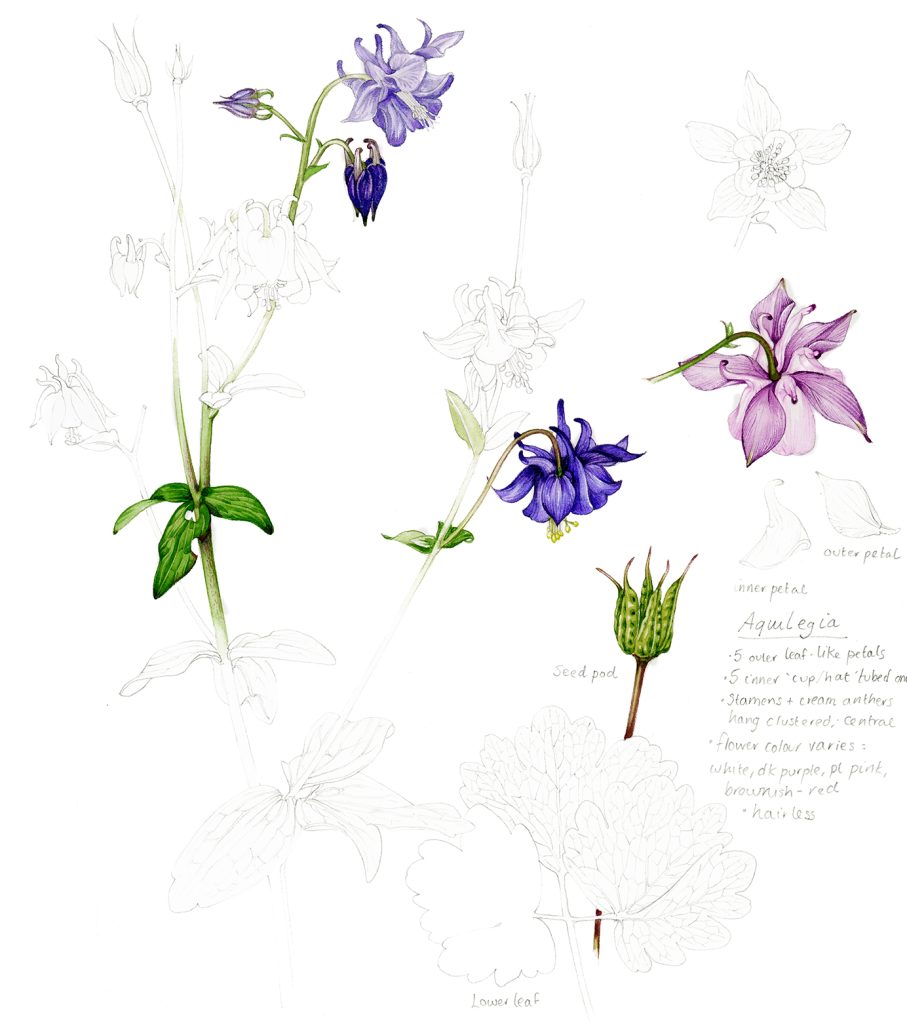
Columbine Aquilegia vulgaris
Conclusion
I hope this whistle-stop introduction to one of the wildflower families has been of use, or at least of interest. Look out for further blogs in this series over the coming weeks and months. Reference for this blog is from the FSC botany course, from Common Families of Flowering Plants by Michael Hickey & Clive King, and from Naturespot, an excellent guide to UK species.
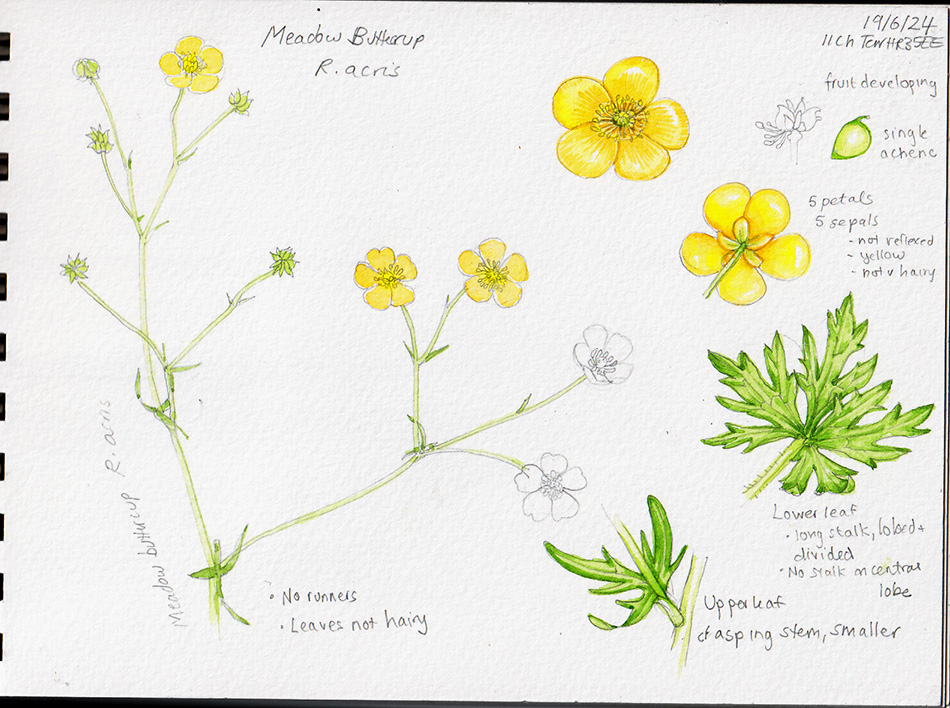
Sketchbook study of Meadow buttercup Ranunculus acris


Really impressive Post. I like it very much
Thank you Mitchell
I had a ranucula this year that was a creamy white with dark purple centers… have you seen them?
Hi Cw
No, Ive not seen that one. It sounds like a beauty! Dont think its a UK species, or I would have been out there trying to track it down! Thanks, and sorry not to be more use.